|
Ozone Hole 1990
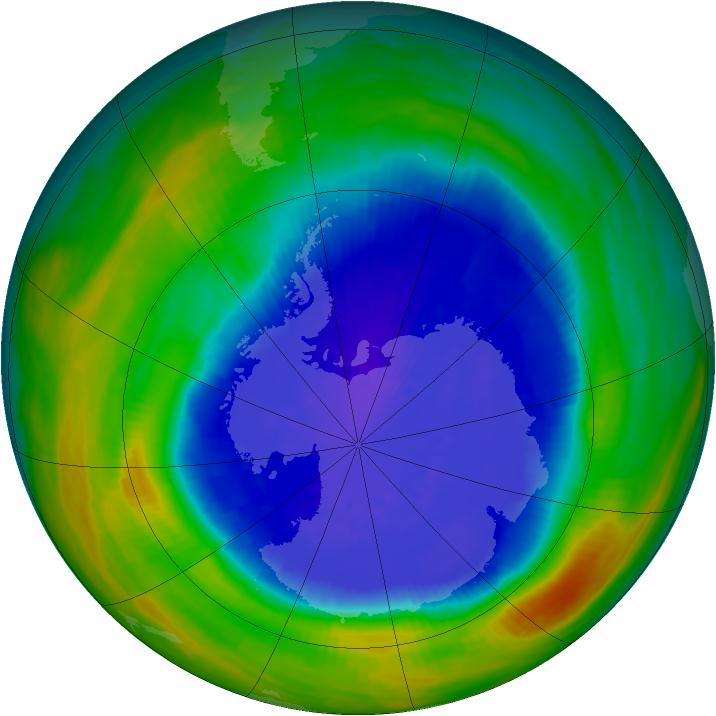

Ozone Hole Area
|
Minimum Ozone
|
|
(million km2) |
(DU) |
|
Maximum Daily |
Minimum Daily |
|
Year |
Date |
Value |
Date |
Value |
|
1990 |
19 September |
21.1 |
05 October |
111 |
http://ozonewatch.gsfc.nasa.gov
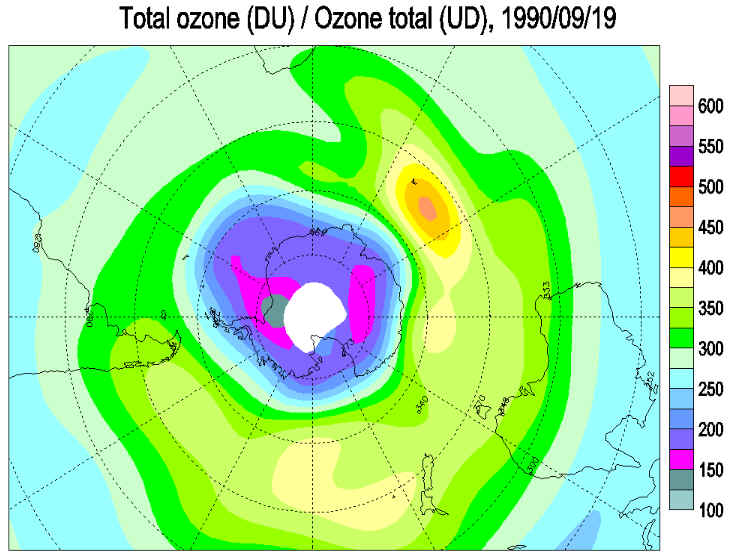
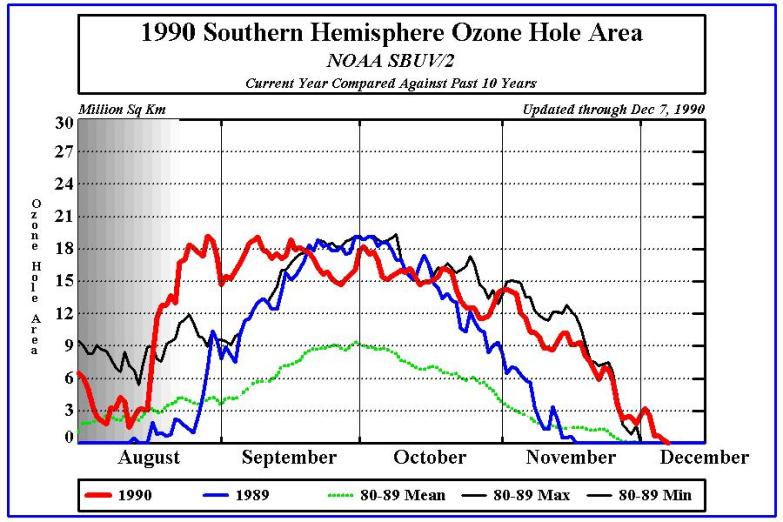
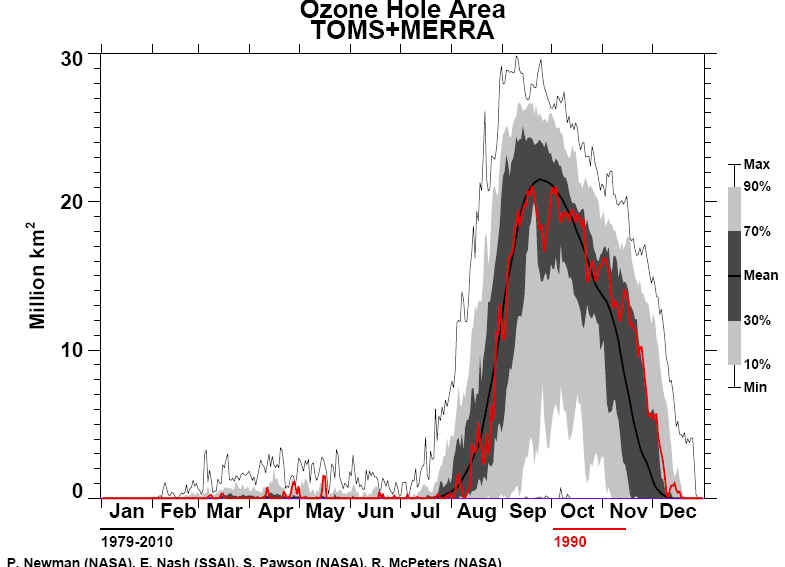
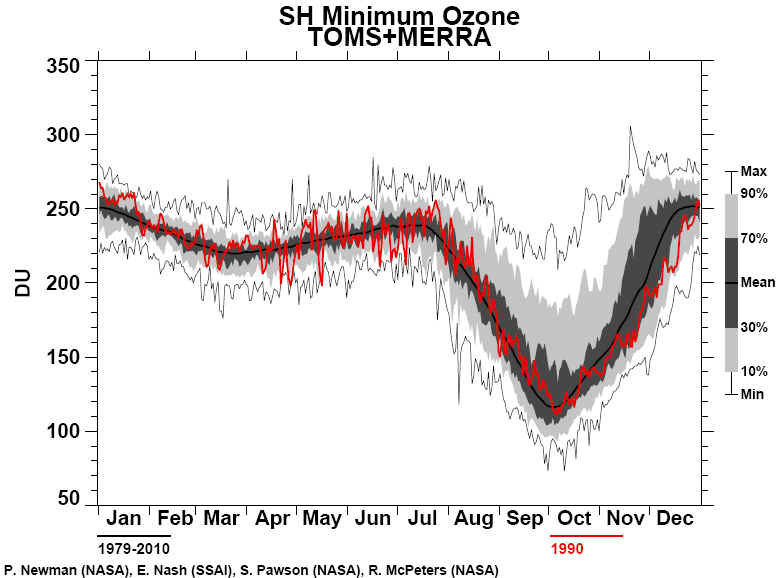
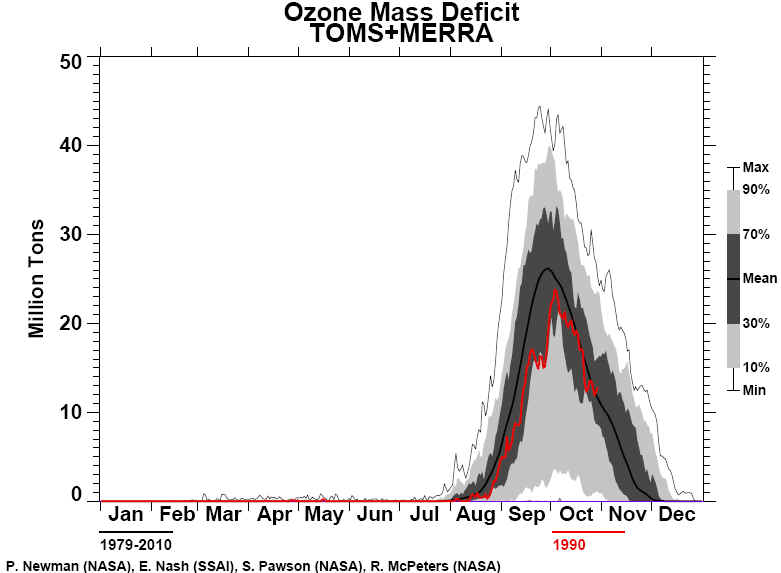
The 1990 Antarctic Ozone Hole as observed by TOMS
The 1990 Antarctic ozone hole matched the record 1987 ozone hole in depth,
duration, and area. During the formation phase of the hole (August), total ozone
values were the lowest yet recorded. The decline rate approximately matched the
record 1987 decline, and reached a minimum of 125 Dobson Units on October 4,
1990. October total ozone averages were marginally higher than 1987. As during
1987, the 1990 total ozone values within the hole slowly and steadily increased
during the mid‐October through November period. The ozone hole breakup was the
latest yet recorded (early December), with low ozone values persisting over the
pole through December, setting a record low for December average polar ozone.
Temperatures were near average during the early spring, but were below normal
for the late‐spring. Temperatures in the early spring of 1990 were substantially
warmer than those observed in the early spring of 1987.
Paul Newman NASA Goddard Space Flight Center
Richard Stolarski NASA Goddard
Space Flight Center
Mark Schoeberl NASA Goddard Space
Flight Center
Richard McPeters NASA Goddard
Space Flight Center
Arlin Krueger NASA Goddard Space
Flight Center
|